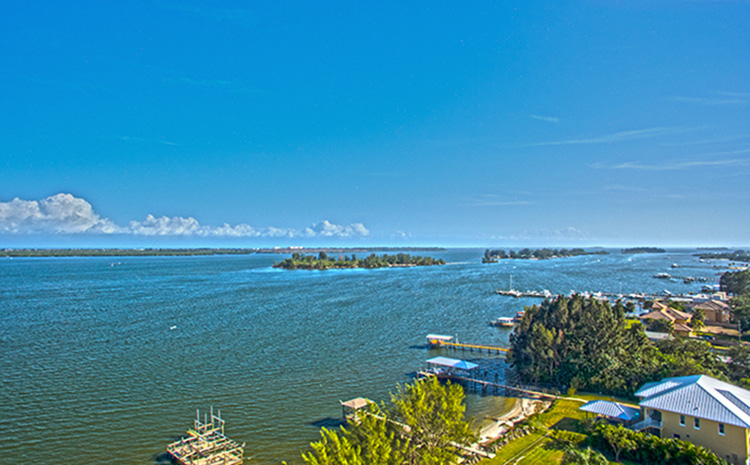
The Marine Resources Council has released its fourth annual health report card for the Indian River Lagoon and the news is not good. There’s been some improvement since last year, but the waterway still got an overall failing grade of F-plus. And Florida’s beloved marine mammal mascot, the manatee, is in big trouble because of it.
After crunching 27 years of state monitoring data for water quality and seagrass coverage over 10 regions of the 156-mile-long estuary, the council found a small upward tick in water quality. But researchers also found a continuing decline of seagrass habitat – the foundation of all marine life in the lagoon that supports creatures ranging from tiny plankton to massive manatees.
Scores were assigned to each indicator from 0 (terrible) to 100 (very good), with a score of 80 meeting state regulatory targets. The lagoons overall score was a dismal 58 this year, up slightly from last year’s 52.
“We got an F-plus in 2020,” Marine Resources Council Executive Director Dr. Leesa Souto told webinar participants and a live audience last week, speaking at the group’s Palm Bay headquarters on the shore of the Lagoon. She noted that the change in water quality, while slight, was “at least in the right direction.”
The annual Lagoon health report card’s release comes as Florida – and the lagoon in particular – has been hit by an enormous wave of starvation-related manatee deaths. About 760 died in first five months of 2021, compared to 637 in all of 2020.
More than 300 of those fatalities occurred in Brevard County lagoon waters where manatees congregated during winter cold spells, seeking warmer waters and seagrass to eat. But the animals found little forage there; the area has lost up to 90 percent of seagrass coverage since an algae “superbloom” in 2011.
“Algae blooms kill seagrass,” Souto told her dual audience. “And when the seagrass dies, the vegetarians starve; that’s what happened with the manatees.”
The state and federal government have declared the manatee die-off an “unusual mortality event,” triggering extra money and personnel to rescue and rehabilitate sick animals and perform necropsies on the dead. Deaths accumulated so quickly this year that state wildlife veterinarians have only been able to do necropsies on one in three dead animals.
Pat Rose, executive director of the Save the Manatee Club – whose founding members include singer Jimmy Buffet and former Florida Governor and U.S. Senator Bob Graham – joined Souto at last week’s presentation. The organization has been helping the state coordinate the rescue and rehabilitation of sick animals.
“Thankfully, it’s abated some now when the warm weather came and the manatees are now spreading out and trying to find other food resources,” Rose told the gathering. He added that three rehabilitated manatees were just released in the St. Sebastian River to be tracked and documented to see “what they are doing in the ecosystem.”
Added Rose: “The sobering part is despite a lot of positive things happening, it’s difficult to know how things will be for the manatees next winter.”
He said the U.S. Fish & Wildlife Service should reconsider its 2017 decision to downlist the manatee from “endangered” to “threatened” on the U.S. Endangered Species list and develop contingency plans for rescuing and rehabilitating the mammals should the need arise next winter – as it likely will.
Meanwhile, Rose and Souto exhorted audience members to do their part to restore the lagoon ecosystem by halting the application of fertilizers and pesticides to lawns; properly disposing of pet wastes; pressuring local governments to inspect and fix wastewater and stormwater infrastructure; volunteering to restore lagoon shorelines by planting mangroves; and advocating for low-impact development that uses less water and generates less waste.






